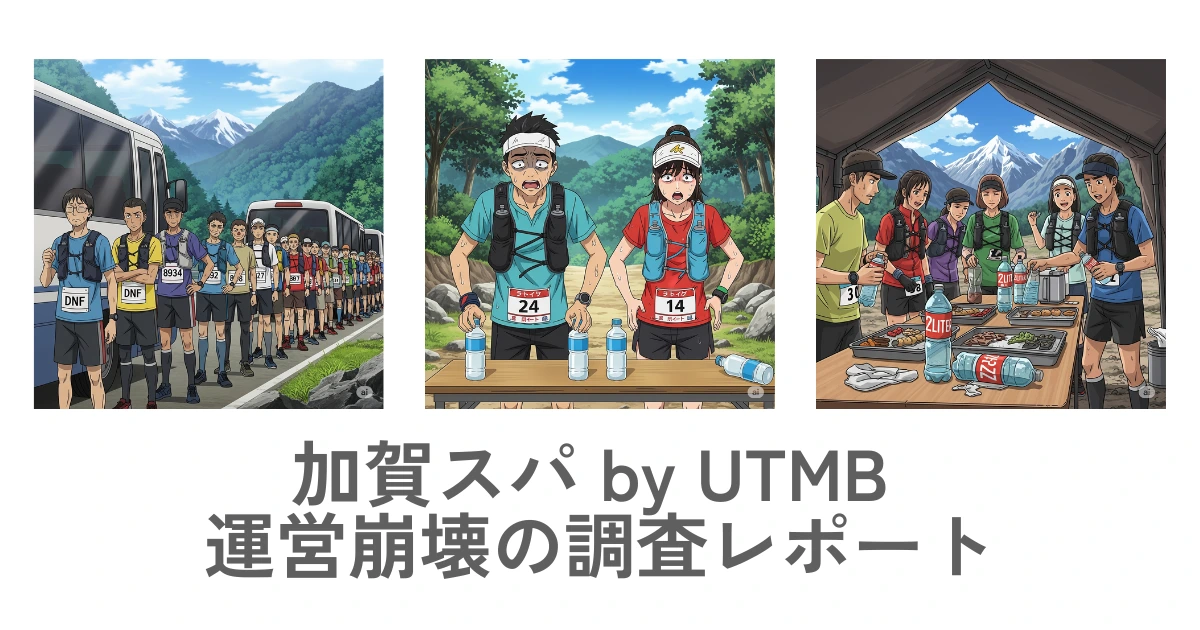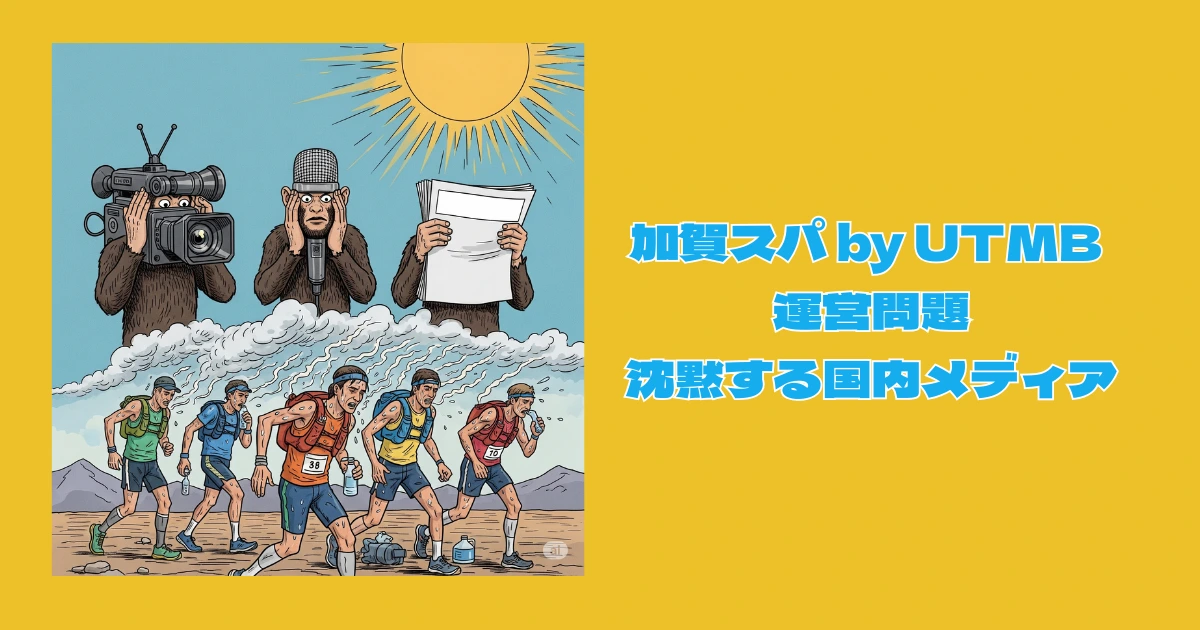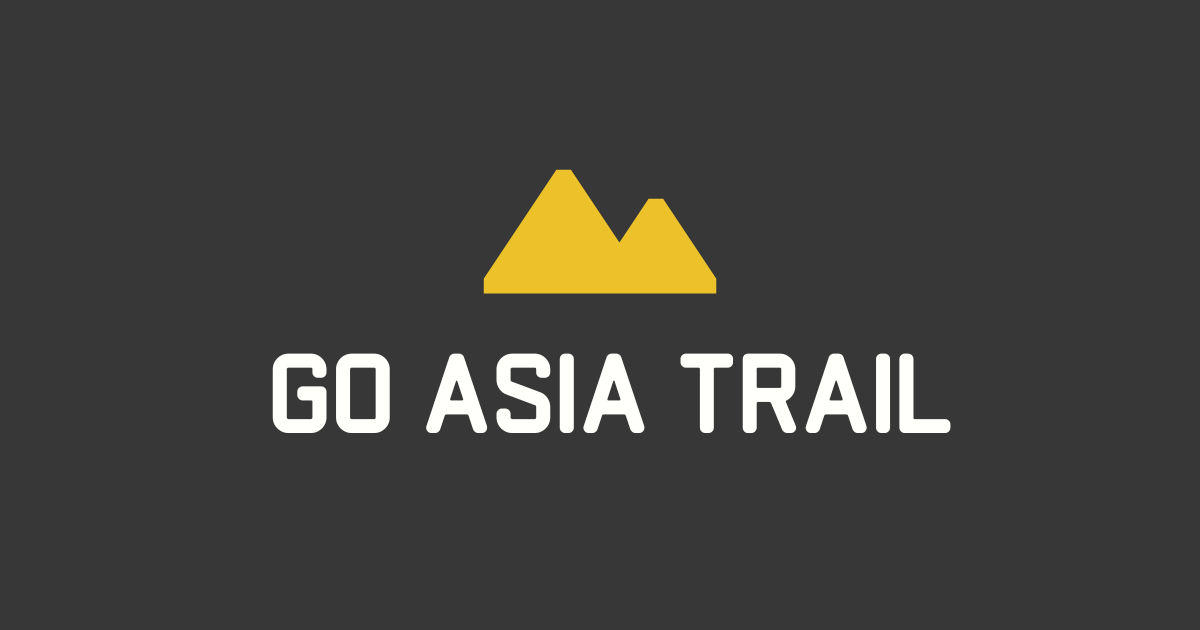This report is based on information gathered from the Internet as of June 28, 2025, using the Deep Research function of Google Gemini, with edits made on the part of GO ASIA TRAIL.
Introduction: A Promise Betrayed on the Hottest Day in Japan
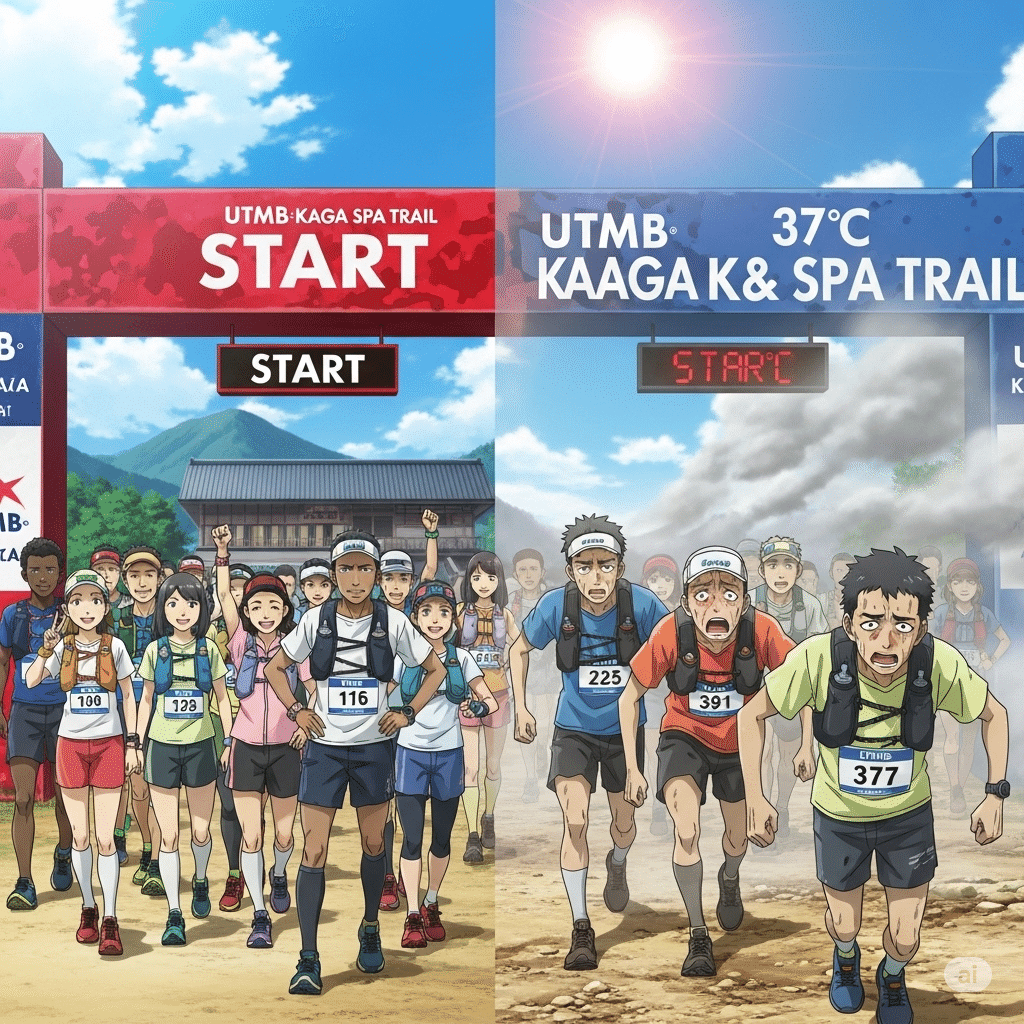
The Kaga Spa Trail Endurance 100 by UTMB®, held on June 21-22, 2025, was more than just a trail running race. It was the first official event to be held in Japan by the UTMB® World Series, the world's premier trail running circuit, and was to be a historic milestone for the Japanese trail running community. With the historic Yamanaka Onsen hot spring resort in Kaga City, Ishikawa Prefecture, as the stage, the event promised to be a world-class race of international standard, and high expectations were pinned on it as a catalyst for regional development in the wake of the Noto Peninsula earthquake.
As if to confirm these expectations, the event attracted 2,848 runners from 43 countries, of which 928, or 33%, were from overseas. Many elite athletes, including China's top runner TAO LUO (UTMB Index: 886), participated, giving the event a spectacular international flavor. This global attention led to a worldwide audience of witnesses to the catastrophe that was to follow.
However, this grand vision collided with a harsh reality. On the day of the race, the temperature at Yamanaka Onsen reached 37°C, making it the hottest point in Japan on record. In the midst of this record-breaking heat wave, a chain of organizational and operational failures led to an unprecedented situation. Particularly in the 100 km section, the finish rate was shockingly below 40%, forcing many runners to retire from the race. Although this issue was widely reported in the Hong Kong media and other foreign media, it has received little coverage in the Japanese domestic media.
What this report argues for is the fact that this tragic failure of the Kaga Spa Trail by UTMB was not just a product of bad luck or circumstances. It is a fundamental and unresolved conflict between the minimalist, hard-core management philosophy of local organizer Powersports (OSJ), long known in Japan for its "spartan" race management, and the standards of safety and support that a global brand such as UTMB should guarantee to its participants. This was the inevitable result of a fundamental and unresolved conflict between the minimalist, hardcore operating philosophy of OSJ and the standards of safety and support that the global brand of UTMB should guarantee to its participants. This conflict, amplified by extreme weather conditions and questionable pre-planning, led to a catastrophe.
Chapter 1: Anatomy of a Catastrophic Failure - The Collapse of a Race Weekend
This chapter combines official race data with the poignant testimonies of participants to reconstruct the process of the event's collapse chronologically and thematically, providing a vivid picture of the entire mess.
1.1 The Crucible: an unforgiving course in extreme heat
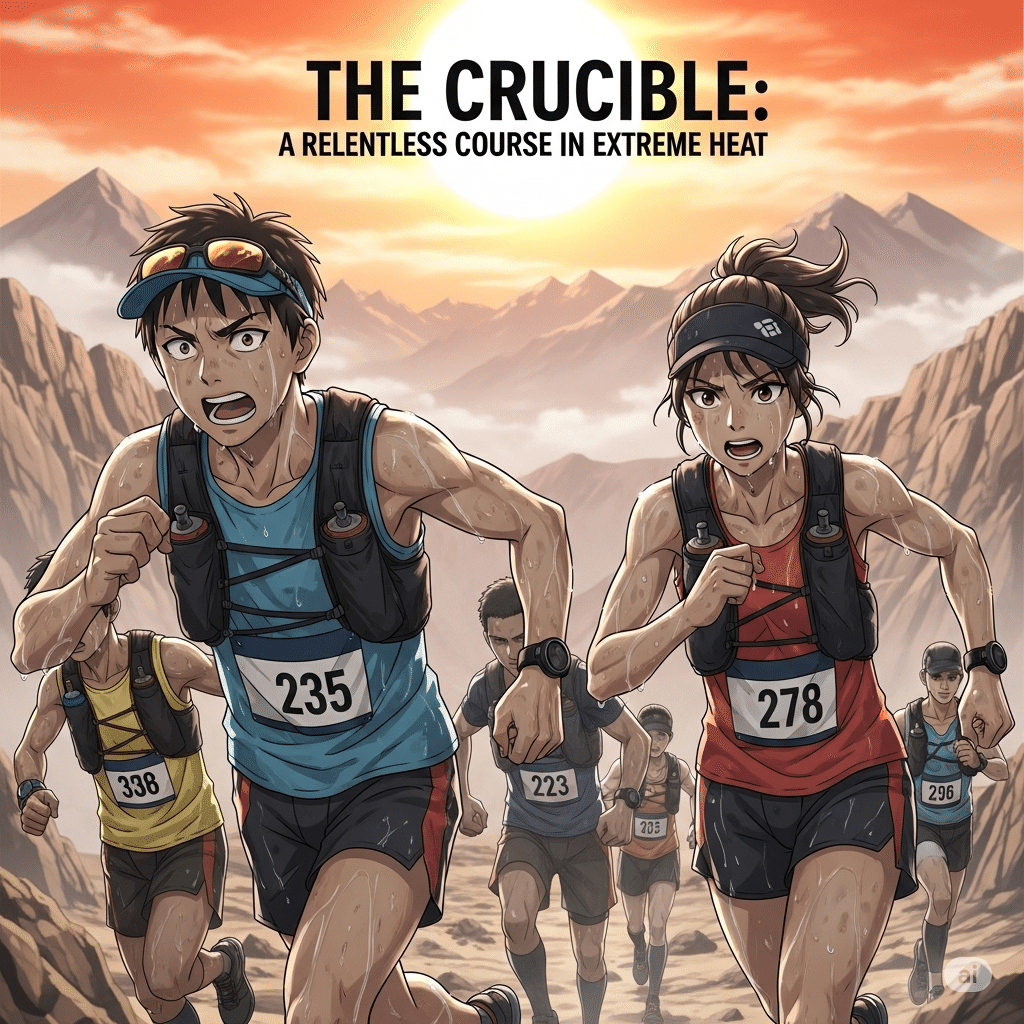
The tragedy of this race began with its foundation: the course setup and weather conditions. The course was originally an evolution of the OSJ Yamanaka Onsen Trail Race, which was so grueling that it was nicknamed "Yabachu (Bad Yamanaka)." The new UTMB-branded version was even more demanding, with the 100km section (actually about 105km) boasting an astounding 6,100m cumulative elevation The course was roped and steep. The course included steep roped climbs, technical descents, and constant small ups and downs.
To this unforgiving course was added the predictable "hell. The race day, June 21, was the summer solstice, the day with the most hours of daylight. Yamanaka Onsen was experiencing a record-breaking heat wave with temperatures as high as 37ºC. This extreme heat was not unexpected and was a foreseeable risk for a late June race in this part of Japan.
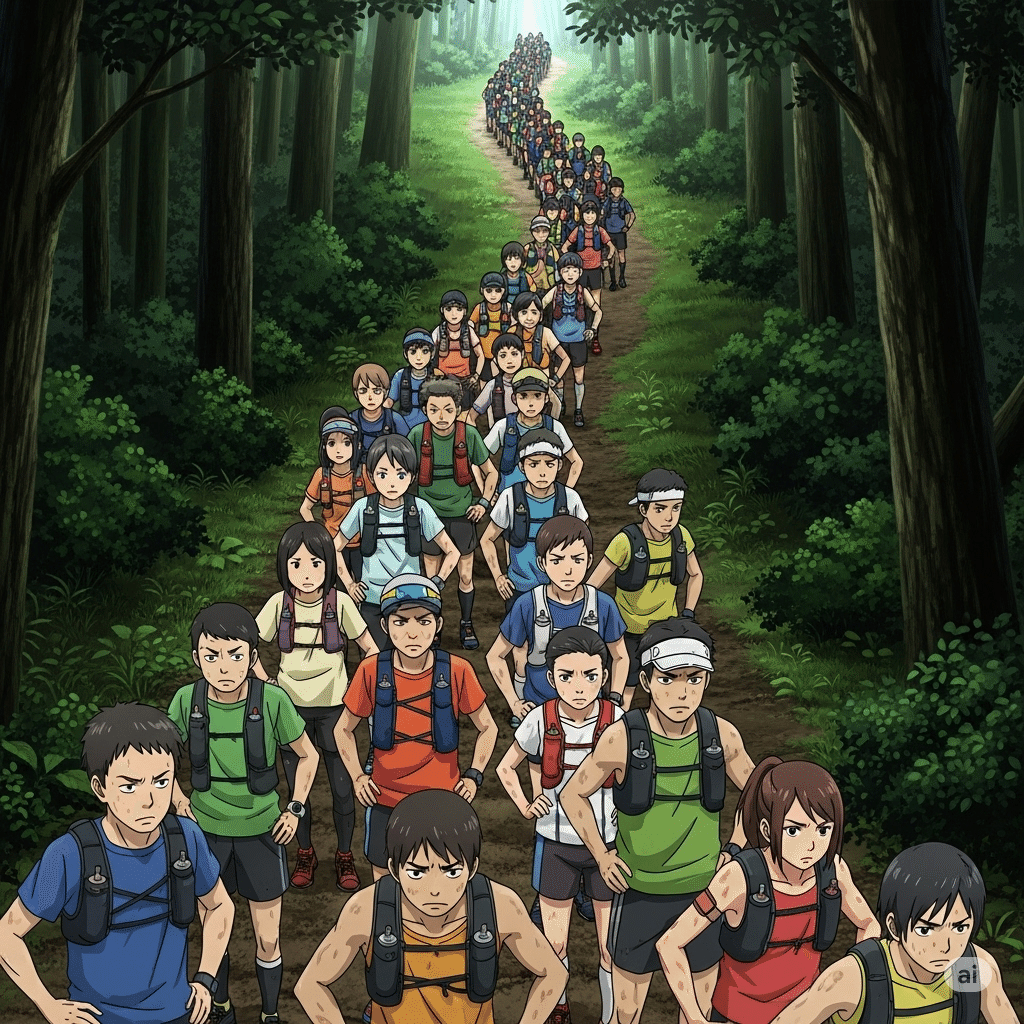
And from the very beginning of the race, the first signs of trouble appeared. A massive "traffic jam" developed on the narrow singletrack, forcing runners to stop intermittently for more than 30 minutes. This logistical oversight derailed the runners' pacing and hydration strategies early on, unnecessarily prolonging their stay in the dangerously hot conditions.
1.2 Collapsing front lines: poorly organized aid stations
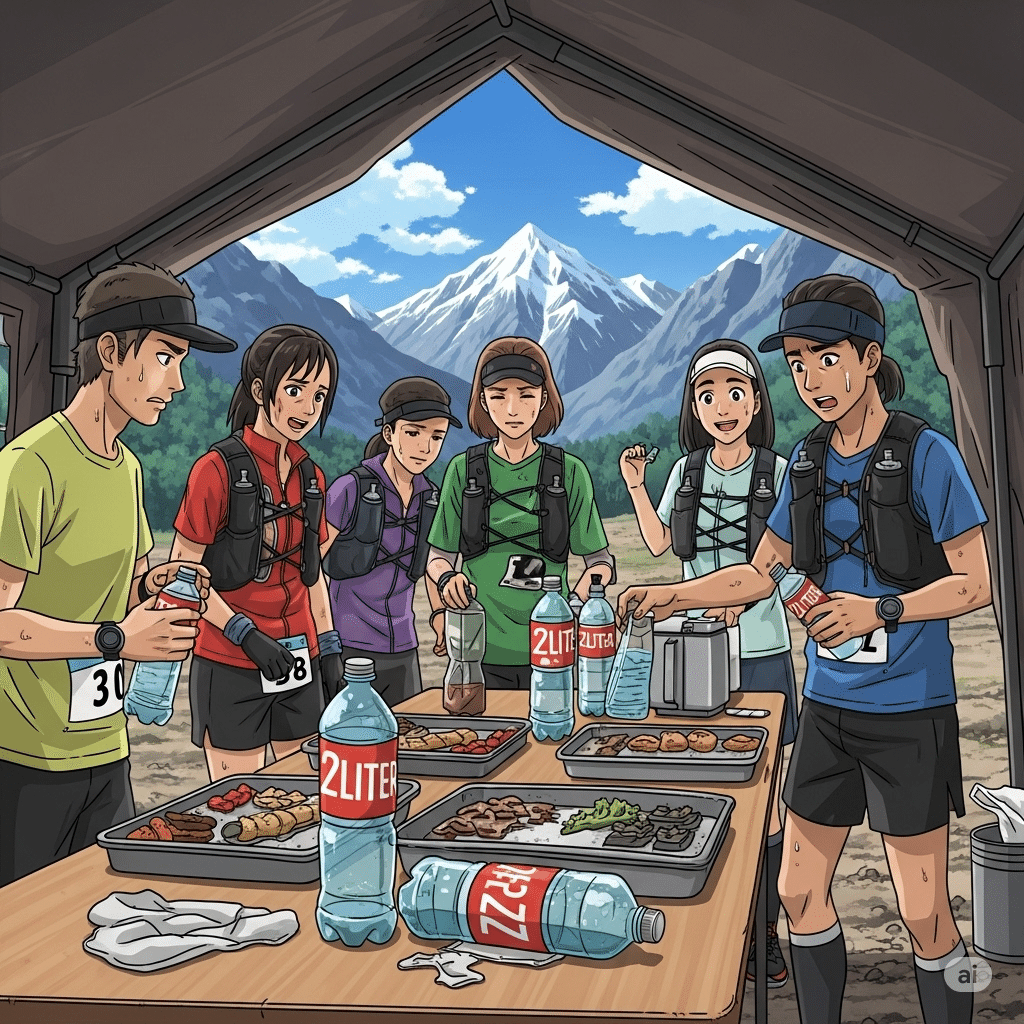
The official Runner's Guide and race details promised "well resupplied aid stations" . Water, sports drinks, colas, fruit, and meals were supposed to be available there . This section systematically examines how that promise was violated. According to reports from participants' blogs and social networking sites, the inadequacy of aid stations was a chain reaction.
- AS2 Ouchi (17km point): bananas that were supposed to be offered here were reportedly not there at all. This was a precursor to more serious problems later.
- AS3 Kutani Dam (26 km point): A catastrophic supply shortage occurred here. Several participants testified that, contrary to the extensive menu in the Runner's Guide, there was "only water" or, if any, "Happy Turns. This was an important early supply stop, and many runners were so emotionally and physically devastated by the lack of calorie supply that they decided to retire at this point.
- Widespread problems: At other aid stations, the colas provided were lukewarm, curry and rice were too salty, and watermelons were given out only after request, highlighting not only the mere lack of supplies, but also poor quality management systems.
Furthermore, there was a 17-km stretch without a water supply point between the 48-km and 65-km aid stations. In this extreme heat, going such a long distance without water was extremely dangerous, forcing runners to desperately conserve water and causing widespread dehydration and heat stroke-related problems.
This series of failures was not just a mistake, but an organizational breakdown. It undermined the basic trust that exists between runners and organizers. Aid stations are more than mere refueling points; they are a runner's lifeline and psychological support. The sight of an empty aid station waiting for a runner after a grueling section gives runners a sense of hopelessness, that the organization cannot be trusted and that they have been completely abandoned. This is a major cause of many runners retiring from AS3, not only because of their physical limitations.
1.3 Logistical Paralysis: Runner Transportation Disruption
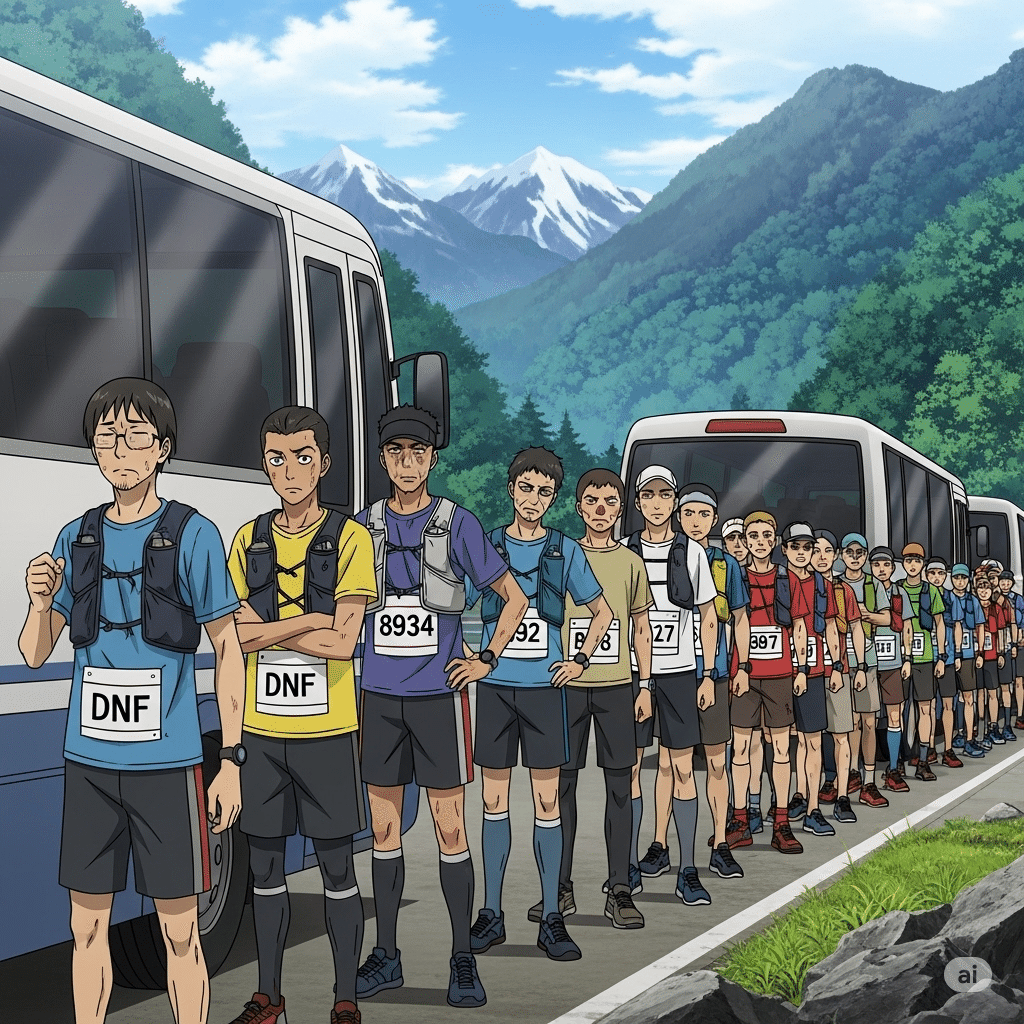
Logistical problems began even before the race. Participants faced waiting more than 30 minutes for shuttle buses in high temperatures the day before the race.
The most serious problem, however, was the treatment of runners who retired (DNF). The organizers' "Duty of Care" was completely abandoned. Runners who decided to retire due to dehydration and fatigue were then left alone for long periods of time.
- At the 45km checkpoint, retired runners waited for more than 1 hour and 20 minutes for a transport vehicle.
- The transport vehicles, one 22-passenger, two 7-passenger, and one 11-passenger, were completely inadequate for the number of retirees, leaving a huge number of runners waiting to be evacuated.
- Some runners were still waiting for transport at 9:10 PM.
In addition, some staff members reportedly made anxious runners who were considering retiring, stressing to them that they would not be able to turn back from here to the finish line at night. This was an extremely irresponsible response, driving runners to retire while failing to support them afterward.
This sequence of events illustrates the "cascade effect" of cascading failures. First, traffic congestion on the course delayed the runners, exposing them to the hottest part of the day. This increased the demand for water and calories, but the aid stations they reached were critically short of supplies. This led to massive DNF, which in turn completed a chain of failures that completely paralyzed the inadequate DNF transport system. This was not a discrete problem, but the complete lack of an integrated crisis management plan.
1.4 Impact on People: Record DNF Rates
The human toll of this operational fiasco is clearly visible in the official DNF rate, which, according to UTMB Live data, is shocking.
- KagaSpa100: 1,164 runners, 709 DNFs, 455 finishers; DNF rate: 60.9%.
- KagaSpa50: 902 runners, 250 DNFs, 652 finishers; DNF rate: 27.7%.
- KagaSpa20: 471 runners, 2 DNF, 469 finishers; DNF rate: 0.4%.
The extraordinary DNF rate of 60.9% in the 100km category cannot be explained simply by the heat or the difficulty of the course. This figure is a direct and quantifiable result of a failure in organizational management.
The comparably low DNF rate in the 50 km segment and almost none in the 20 km segment suggest that the longer runners were exposed to the course and the collapsed support system, the greater the likelihood that they would be forced to retire.
Participants' testimonies also confirm that DNFs were caused not only by physical exhaustion, but also by the emotional toll of witnessing the lack of supplies and empty aid stations.
The following table visually and quantitatively illustrates the serious discrepancy between what was promised to runners in official materials and what was actually reported in the field. This is solid evidence of logistical breakdown and refutes claims that attribute the high DNF rate solely to runners' lack of preparation.

Table 1: Promise vs. Reality - Aid Station Supply Conditions on a 100km Course
Chapter 2: Root Cause Analysis - Conflicting Race Philosophies
In this chapter, we argue that the operational failure was not due to mere incompetence, but was symptomatic of a deep-seated philosophical conflict between the local organizers and the global brand they represent.
2.1 "OSJ Quality": The Spartan Race Tradition
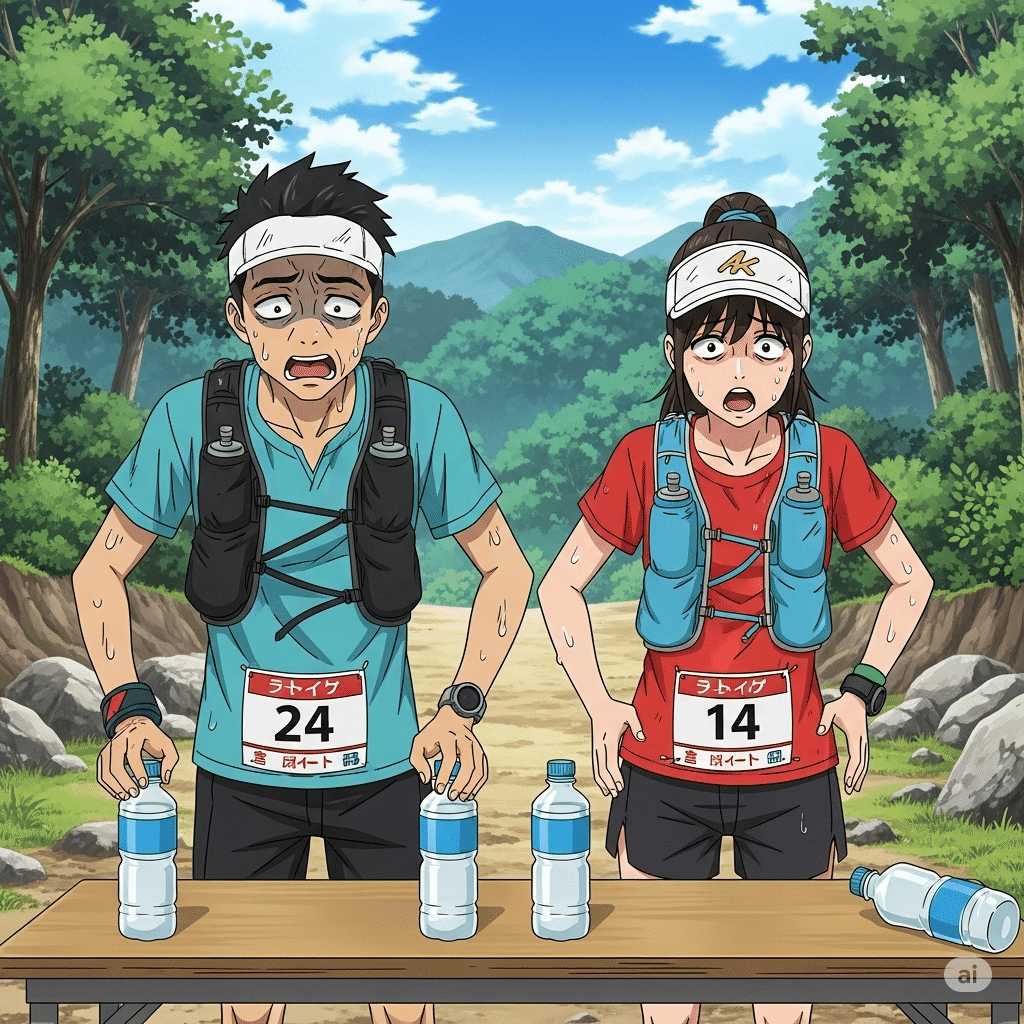
The organizer of this event was Powersports Ltd. The OSJ Trail Running Series, organized by the company, has a long history in the Japanese trail running community. Reviews by runners who have participated in other OSJ-sponsored races (Shinshiro, Otaki, Okkuji, etc.) reveal a unique management philosophy known as "OSJ Quality”.
- Extremely demanding course setup: The courses are intentionally designed to be demanding, often longer than the nominal distance and boasting enormous cumulative elevation. One participant describes it as "full of dos and don'ts.
- Minimal support: Aid stations are known to be poorly resupplied, often offering only water. Runners are expected to be almost completely self-sufficient. It has been described as an "this course is a challenge, get over it" attitude, with no "contrived excitement" provided.
- Inaccurate information: Distance markings and directions on the course are frequently inaccurate.
- Low cost, frugal operation: In exchange for this spartan experience, the entry fee is set low compared to other major competitions.
The Kaga Spa Trail reflected this OSJ philosophy. The Kaga Spa Trail reflected the OSJ philosophy of a grueling course, empty aid stations, and extreme self-responsibility on the part of the runners. The race director's statement of apology, "For runners unfamiliar with the old OSJ Yamanaka Onsen Trail Running Race, the conditions may have been more challenging than expected," is an indirect admission that this management philosophy was at the root of the race.
2.2 UTMB's Responsibility: The Promise of Global Standards
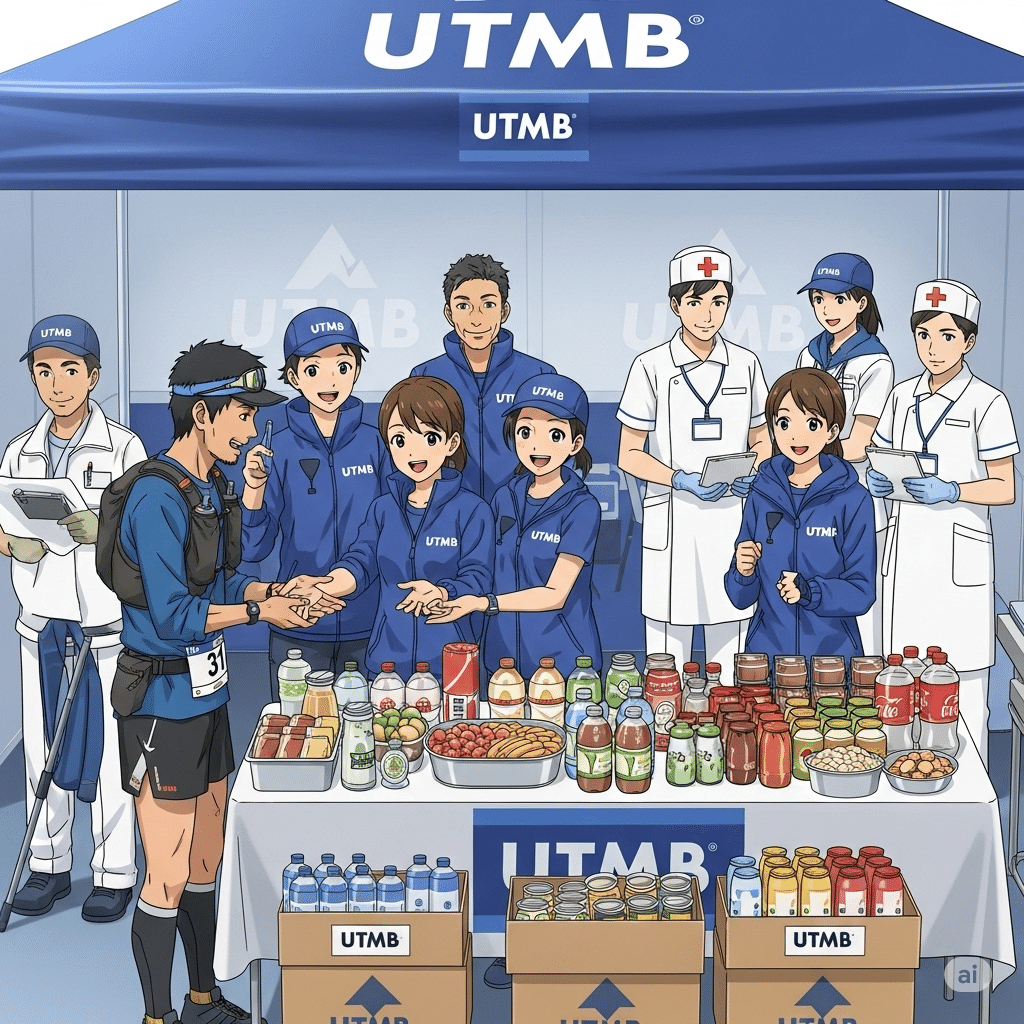
On the other hand, the brand image of the UTMB World Series is the opposite of that of OSJ. It is a premium global circuit with "the highest quality standards" and participation is positioned as part of a "quest" to reach the final in Chamonix.
The official regulations of the UTMB World Series clearly define the standards guaranteed by the brand.
- “Semi-autonomy" and not "abandonment": The rules define "semi-autonomy" as the carrying of essential equipment by runners "between" aid stations. This is an explicit assumption that the organizers will provide reliable and guaranteed resupply at aid stations. The sentence "Aid stations will provide drinks and food to be consumed on site" is a contractual obligation of the organizers.
- Duty of Care: The regulations detail procedures for medical assistance and emergencies, suggesting a strong organizational responsibility for runner safety. The role of the organizer is to manage the "event"; it is the "personal" issues (fatigue, minor injuries, etc.) that the runner manages. Lack of water is a failure of the "event", not a "personal" problem.
- Global consistency: The entire system, such as Running Stone and the UTMB Index, assumes that consistent and reliable race standards are maintained for all events, from Thailand to Europe and now Japan.
2.3 Failure to reconcile: bringing a domestic model to a global franchise
It can be concluded that the catastrophe at Kaga was a direct result of OSJ's failure to transition from its own domestic, low-cost, minimalist model to the high-support, high-security, premium model demanded by UTMB. They essentially just stuck the UTMB logo on an OSJ-style race.
This clash of philosophies is evident in several ways.
First, the empty aid stations are the most glaring example of OSJ's minimalist philosophy being unacceptably applied to a UTMB event.
Second, the chaos of transporting DNF runners demonstrates that the "self-responsibility" philosophy has been extended to crisis management, completely abrogating the duty of care implicitly owed by the UTMB.
Third, it is possible that a lack of sponsors and financial difficulties were the root causes. This hypothesis offers a concrete economic explanation for the operational corner-cutting: OSJ has traditionally been known for its low-cost race operations . On the other hand, UTMB franchise fees are presumably high, and the costs of meeting UTMB standards (extensive aids, a robust medical system, and an extensive transportation plan) far exceed OSJ's traditional operating budget.
If sponsorship revenues were insufficient to fill this gap, organizers may have been forced by financial pressures to revert to a low-cost, minimalist "OSJ-quality" operation, despite the UTMB branding. This suggests that the failure may have been economic as well as philosophical.
This situation is a classic case study in franchise brand damage: the UTMB has licensed a valuable brand built on the prestige and operational excellence of Chamonix to a local partner whose operating philosophy is fundamentally incompatible with its brand values.
The UTMB logo on the bib created expectations of quality and safety that the organizers did not intend to meet or could not meet. This undermines the credibility of the entire UTMB World Series. If a race bearing "by UTMB" can be so sloppily managed, what exactly does the brand guarantee?
The predictability of this culture clash points to a serious failure in the partnership process on the part of UTMB, namely a lack of due diligence and oversight. Did they provide sufficient training and oversight to ensure compliance with global standards? Or was the partnership a more laissez-faire, license-centric arrangement? The failure at Kaga suggests a weakness in UTMB's global expansion strategy and raises the possibility that market presence was prioritized over operational integrity.
Chapter 3: Aftermath and Path to Rebirth
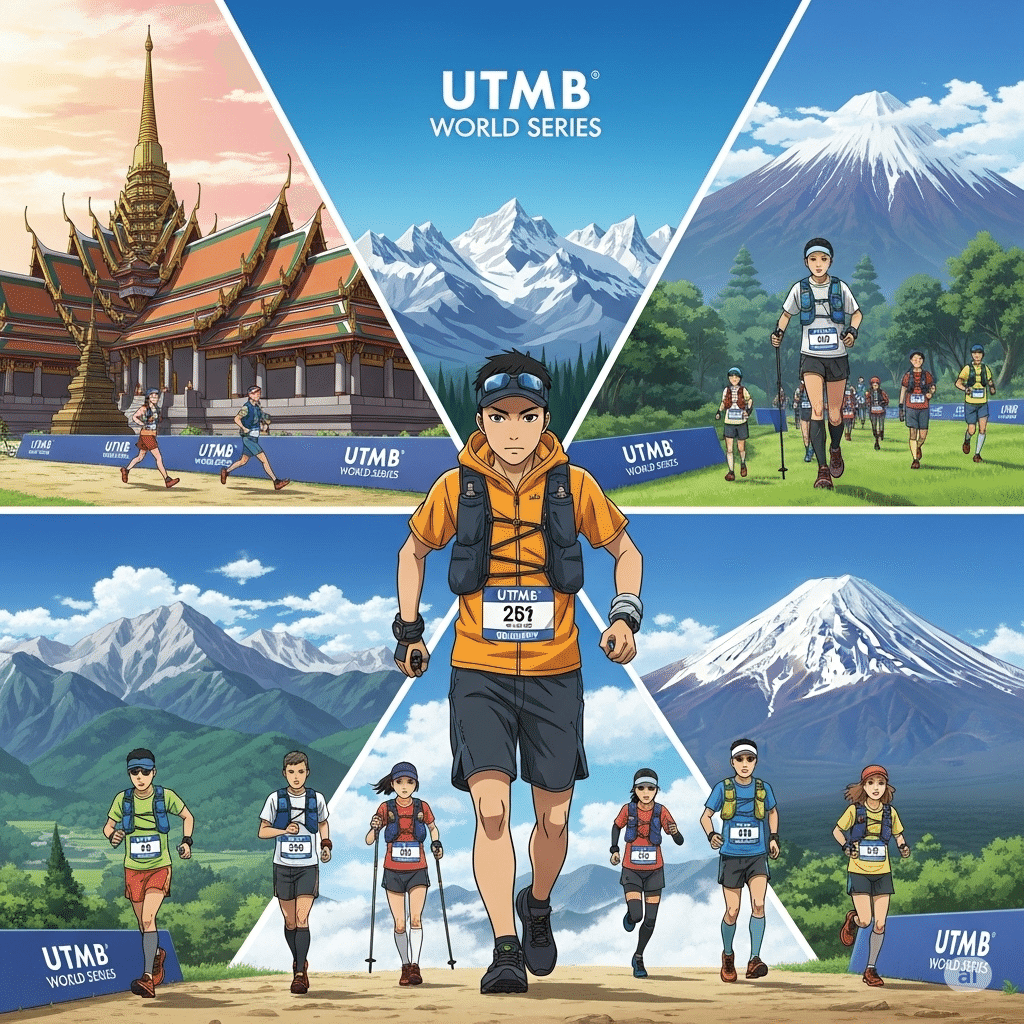
This chapter analyzes the response to the crisis, makes specific recommendations for all stakeholders, and assesses the future viability of the event.
3.1 Official Response and Corrective Actions
Race Director Jiro Takigawa issued an official statement apologizing for the lack of supplies. While this apology is to be commended, the phrase "especially for runners unfamiliar with the old OSJ race..." has an aspect that could be perceived as shifting some of the blame. In addition, the reference to a post-race investigation by the "UTMB Global Team" suggests a two-tier crisis response system.
In addition, all DNF runners in the 100km division were offered a free invitation to the Malaysia Ultra-Trail by UTMB, to be held the following year at the same event or in September 2025. This is an important and necessary gesture to restore confidence. However, as one participant commented, "I am sorry that my DNF was due to an injury and not a problem with the aid," this blanket response does not necessarily fit all situations.
The role of UTMB HQ includes a "post-race investigation" by the "UTMB Global Team. This can be seen as an important data collection activity for UTMB HQ to assess the damage and determine the future of the partnership.
3.2 International Perspective: International Outcry and Loss of Reputation
The incident drew harsh criticism from the international running community. Hong Kong media and participant blogs have expressed anger at both the failure of the local governing body and the UTMB headquarters for allowing it to happen under the UTMB brand. This incident is a major stain on the UTMB brand.
It should be noted that this major international issue has received virtually no coverage in the Japanese domestic sports media, in contrast to extensive pre-promotion1. This "media void" indicates a serious gap between domestic and international awareness of the issue.
3.3 Recommendations to Rebuild Trust and Secure the Future
Fundamental change is essential if this event is to survive.
Recommendations to the organizers (Powersports/OSJ):
- Fundamental philosophical shift: OSJ needs to publicly and unequivocally abandon its own minimalist "OSJ quality" with respect to this event and commit to accepting the global standards of UTMB as the absolute minimum standard.
- A complete overhaul of operations: a full and transparent review of logistics, supply chain management, and risk assessment is required. This plan should be developed and approved jointly with UTMB Global and should benchmark with best practices in Thailand and Europe.
- Duty of Care: The DNF runner management plan should be completely restructured and focused on fast, safe, and dignified transportation for all retired runners. This should be based on the standards of top class races such as the Western States 100.
Recommendations for the UTMB World Series:
- Strengthen partner supervision: UTMB must implement more rigorous and practical supervision protocols for all new franchise events. This should include a mandatory pre-race operational audit by UTMB global staff and a process to ensure that standards are actually implemented and not merely documented.
- Enforce brand standards: UTMB must be prepared to decisively enforce its brand standards, including terminating partnerships that do not meet standards, to protect runner safety and brand integrity. it is essential that UTMB headquarters issue an official statement on the failure at Kaga and outline new oversight measures. It is essential that the UTMB headquarters issue an official statement on the failure at Kaga and outline the new oversight measures.
- Transparent communication: The UTMB should take the initiative to disclose the results of the post-race investigation and the specific measures being taken to prevent a recurrence in Kaga and other events around the world.
Looking to the future of the event: The survival of the event depends on its ability to regain the trust of the international running community, and the 2026 race will be under extremely close scrutiny. A change in the timing of the event should also be seriously considered: holding a 100km race with a cumulative elevation of 6100m in late June in Japan is inherently high risk. Changing the date to a cooler month would be the most effective risk mitigation measure.
Conclusion: A wake-up call to the globalization of sports
The failure of the Kaga Spa Trail by UTMB is more than a single event disaster. It was an organizational failure born of a clash of organizational cultures, inadequate planning for foreseeable risks, and possible failure of oversight by a global franchisor.
This incident is a powerful wake-up call for the globalization of sport: as sports brands like UTMB and Ironman expand globally through franchising, they risk diluting the core promise of their brands if they fail to ensure consistent operational excellence on the ground. The incident at Kaga demonstrates that simply affixing a logo is not enough; the very DNA of the operation itself must be successfully implanted.
Ultimately, the ultimate measure of any race, branded or not, is its commitment to the safety and well-being of its participants, and at the 2025 Kaga Spa Trail, this most basic duty of care was breached. Rebuilding that trust requires more than apologies and free invitations. It demands a deep and tangible transformation in philosophy and practice.
Editorial Postscript (Subjective)
I believe that by utilizing a generative AI, I was able to organize the information without too much bias, as it gathers information from a third party's perspective, not just my subjective one. As for illustrations, I used Gemini's Imagen 3 to draw them. Recently, there has been a lot of talk about ChatGPT being able to draw Ghibli-like pictures, but I personally got tired of it because everyone uses it.
Since the last article, the organizers have announced a remedy for DNFs: free invitations to the Kaga Spa next year or to the by UTMB event in Malaysia in September. I am not sure if this was an arrangement on the part of OSJ or the UTMB Group, but personally, I think that the nearby TransJeju by UTMB (Korea) or TransLantau by UTMB (Hong Kong) would have been better than the Malaysian event.
There are some scattered comments from runners who participated that they would have preferred a refund, but I don't think the management company has the strength to give refunds, so I think they wanted to close the event with a free invitation to the next event or another race.
However, since there is not much of a grace period for applications and runners need to respond by early July, I am wondering how many runners will really apply. At the very least, I would think that international participants would not want to run Kaga Spa again next year.
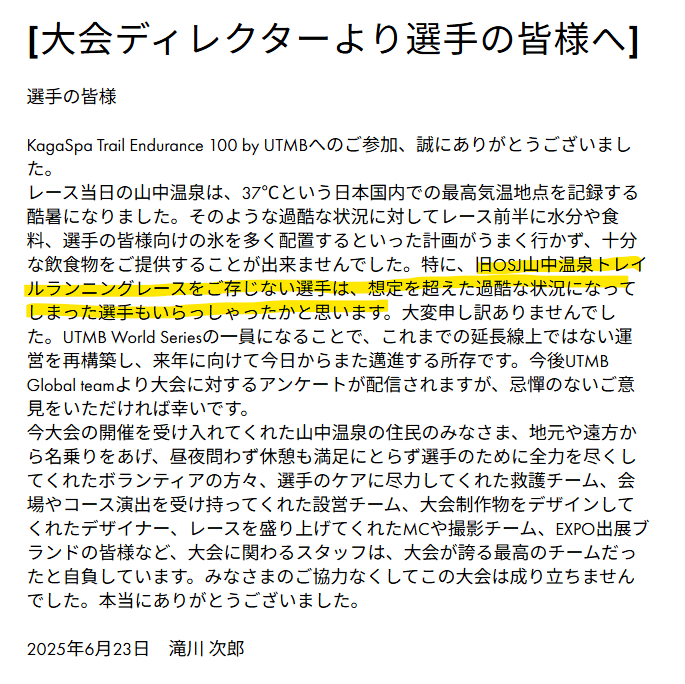
Quote from: https://kagaspa.utmb.world/ja
Also, although there was a message of apology from the event director, Jiro Takigawa, president of Powersports, I was bothered when I first read this statement, because the part marked in yellow above seems to be shifting the blame. At the very least, I think that if he had used AI to correct this message before publishing it, this wording would not have appeared.
I am curious to see what will happen next year, but I think a change in timing will be necessary, and given the size of the management company, the number of people involved, I don't think they have the structure or funds to do a huge race with 2,500 people. To begin with, the style of operation required by UTMB and the style of operation that OSJ has been using so far are very different and mismatched. I believe that these issues have become apparent through this report.
In any case, the UTMB Group is going to distribute a questionnaire from the participants, and I will look at the results and write an article if I have something to say.
Thank you very much for your time.
References
- One of the World's Largest Trail Running Festivals UTMB(R) World Series" to be held for the first time in Japan from June 19 (Thu) to 22 (Sat) | @Press, June 28, 2012 Accessed on 2025, https://www.atpress.com/news/436734
- Kaga Spa Trail Endurance 100 by UTMB will Bring the Trail Running World to the Japanese Ancient Mountains and Heritage Hot Springs, accessed June 28, 2025, https ://utmb.world/news/announcement-Kaga-Spa-Trail-Endurance-100
- UTMB® World Series - Japan - Sportzhub, accessed June 28, 2025, https://www.sportzhub.com/article/utmb-world-series--japan.html
- Kaga Spa Trail Endurance 100 by UTMB - UTMB World Series, accessed June 28, 2025, https://kagaspa.utmb.world/
- Kaga Spa Trail Endurance 100 by UTMB receives a storm of criticism |GO ASIA TRAIL - note, accessed June 28, 2025, https://note.com/goasiatrail/n/nf1c2456f77ee
- Kagaspa Trail Endurance 100 Japan 2025 - UTMB Live, accessed June 28, 2025, https://live.utmb.world/kagaspatrail/2025
- Trail Runner.JP Trail Runner.JP - Trail Running Information Site, accessed June 28, 2025, https://trailrunner.jp/
- What is the course of KAGA SPA TRAIL ENDURANCE 100 BY UTMB like? , accessed June 28, 2025, https://www.hayabusa-sports.com/kaga-spa-trail-endurance-100-by-utmb%E3%81%AE%E3%82%B3%E3%83%BC%E3%82%B9%E3%81%A3% E3%81%A6%E3%81%A9%E3%82%93%E3%81%AA%E3%81%AE%EF%BC%9F/641/
- KagaSpa100 - Kaga Spa Trail Endurance 100 by UTMB, accessed June 28, 2025, https://kagaspa.utmb.world/races/KagaSpa100
- Kaga Spa Trail Endurance 100 by UTMB 2025 - ITRA, accessed June 28, 2025, https://itra.run/Races/RaceDetails/95771
- Kaga Spa Trail 100 Endurance by UTMB Self Review | George's Dad - note, accessed June 28, 2025, https://note.com/gnopapa/n/nd4fe3adb42b4
- Kaga Spa By UTMB results | Ayataro's Trekking Struggles, accessed June 28, 2025, https://ameblo.jp/zozomuayataro/entry-12912417185.html
- KagaSpa50 - Kaga Spa Trail Endurance 100 by UTMB, accessed June 28, 2025, https://kagaspa.utmb.world/races/KagaSpa50
- Runners Guide - Kaga Spa Trail Endurance 100 by UTMB, accessed June 28, 2025, https://kagaspa.utmb.world/runners/runners-guide
- KAGA SPA TRAIL Runner's Journal | Challenge Everyday, accessed June 28, 2025, https://ameblo.jp/tk2008funrun/entry-12912453972.html
- Kaga Spa Trail Endurance100 by UTMB | KATSU Official Blog 2 (temporary), accessed June 28, 2025, https://ameblo.jp/runner-katsu/entry-12912218652.html
- Powersports, accessed June 28, 2025, http://www.powersports.co.jp/
- OSJ TRAIL RUNNING SERIES 2025 - Powersports, accessed June 28, 2025, http://www.powersports.co.jp/osjtrail/
- OSJ TRAIL RUNNING RACE SERIES 2022 《KOBAYASHI Ryoshi》 - Trippers, June 28, accessed 2025, https://trippers-wtrc.com/archives_runnersblog/18939
- New Course for 2023 [OSJ Okkuji Trail 50k Race Report] Too devilish - note, accessed June 28, 2025, https://note.com/mip0000/n/n3955a32e2468
- A UTMB World Series Event, accessed June 28, 2025, https://kagaspa.utmb.world/utmb-world-series
- REGULATIONS - Kaga Spa Trail Endurance 100 by UTMB, accessed June 28, 2025, https://kagaspa.utmb.world/runners/regulations
- REGULATIONS - UTMB World Series, accessed June 28, 2025, https://valholl.utmb.world/runners/regulations
- 2025 REGULATIONS - HOKA UTMB Mont-Blanc, accessed June 28, 2025, https://montblanc.utmb.world/races-runners/other-information/regulation
- REGULATIONS - Chiangmai Thailand by UTMB, accessed June 28, 2025, https://chiangmai.utmb.world/races-runners/runners/regulation
- WILDSTRUBEL BY UTMB® RACE REGULATIONS, accessed June 28, 2025, https://utmbworld-cms.utmb.world/uploads/WILDSTRUBEL_by_UTMB_Race_Regulation2_6b 8212f218.pdf
- Mandatory Gears - Chiangmai Thailand by UTMB, accessed June 28, 2025, https://chiangmai.utmb.world/races-runners/runners/mandatory-gears
- Chiangmai Thailand by UTMB, accessed June 28, 2025, https://chiangmai.utmb.world/
- RACE REGULATIONS AND REGISTRATIONS CONDITIONS - HOKA Val d'Aran by UTMB®, accessed June 28, 2025, https://valdaran.utmb.world/race/regulations
- KAGA SPA story is not over | Aya Taro's Struggles in Treerunning, accessed June 28, 2025, https://ameblo.jp/zozomuayataro/entry-12912932449.html
- Press release about "Marathon" - PR TIMES, accessed June 28, 2025, https://prtimes.jp/topics/keywords/%E3%83%9E%E3%83%A9%E3%82%BD%E3%83%B3
- 2025 Participant Guide - Western States Endurance Run, accessed June 28, 2025, https://www.wser.org/participant-guide/
